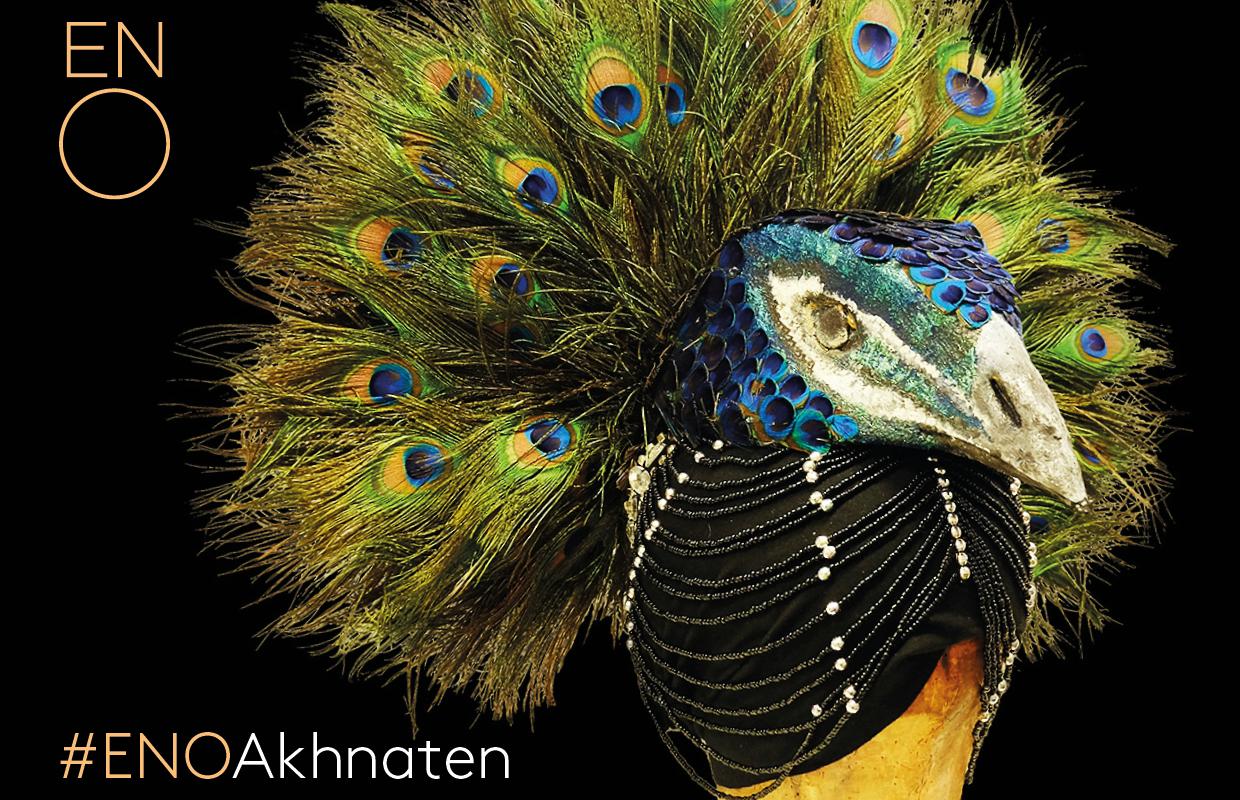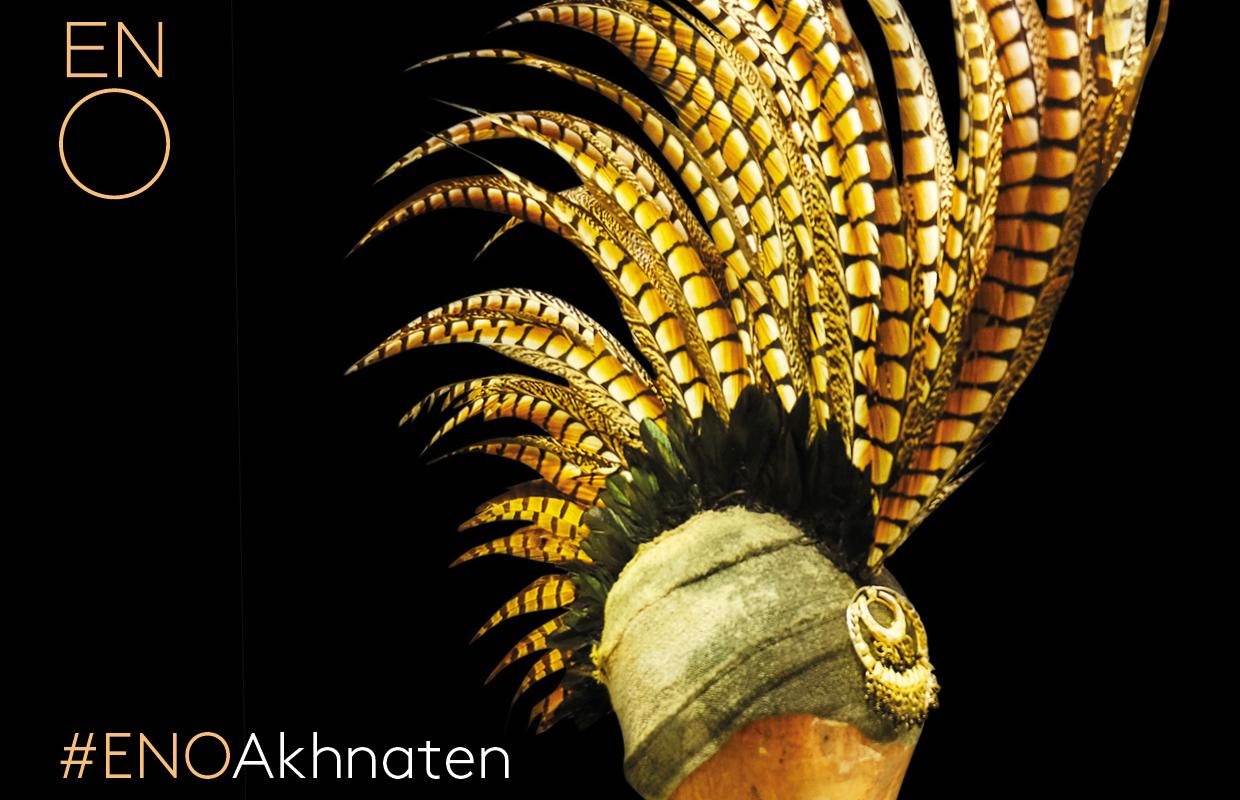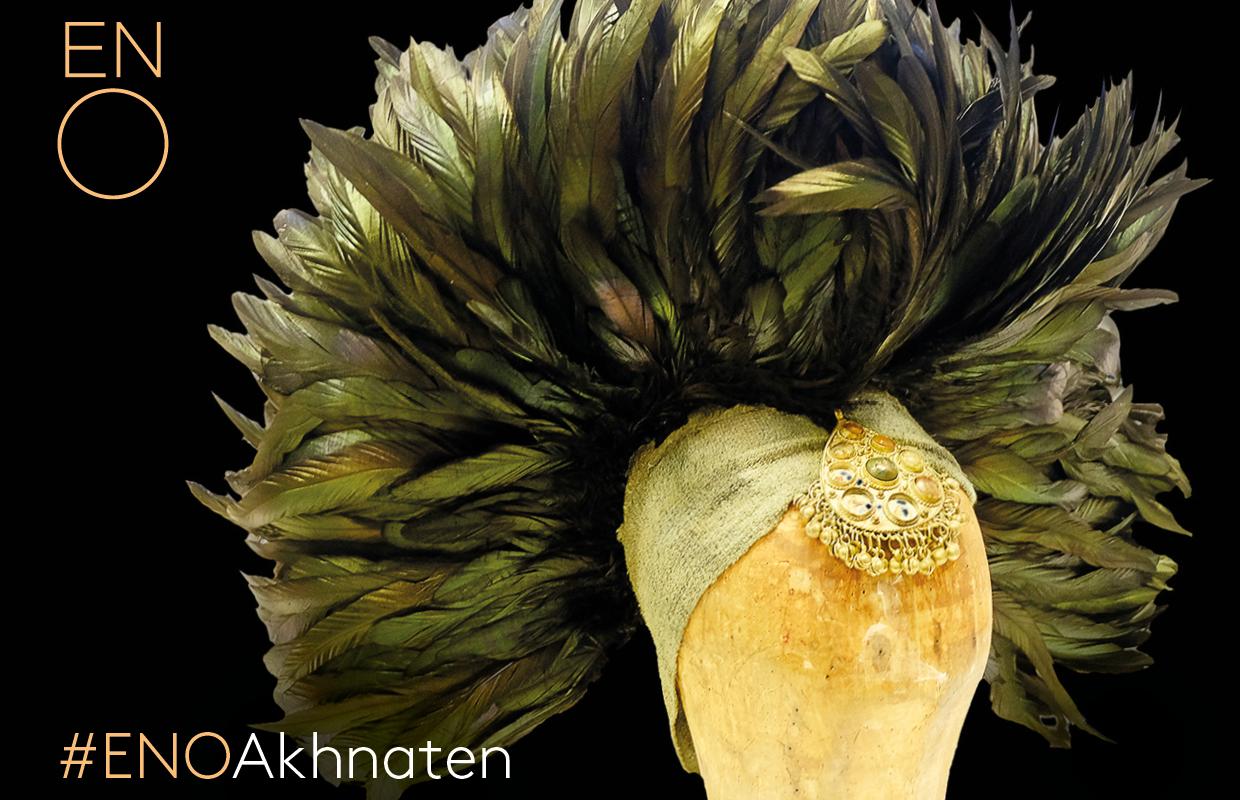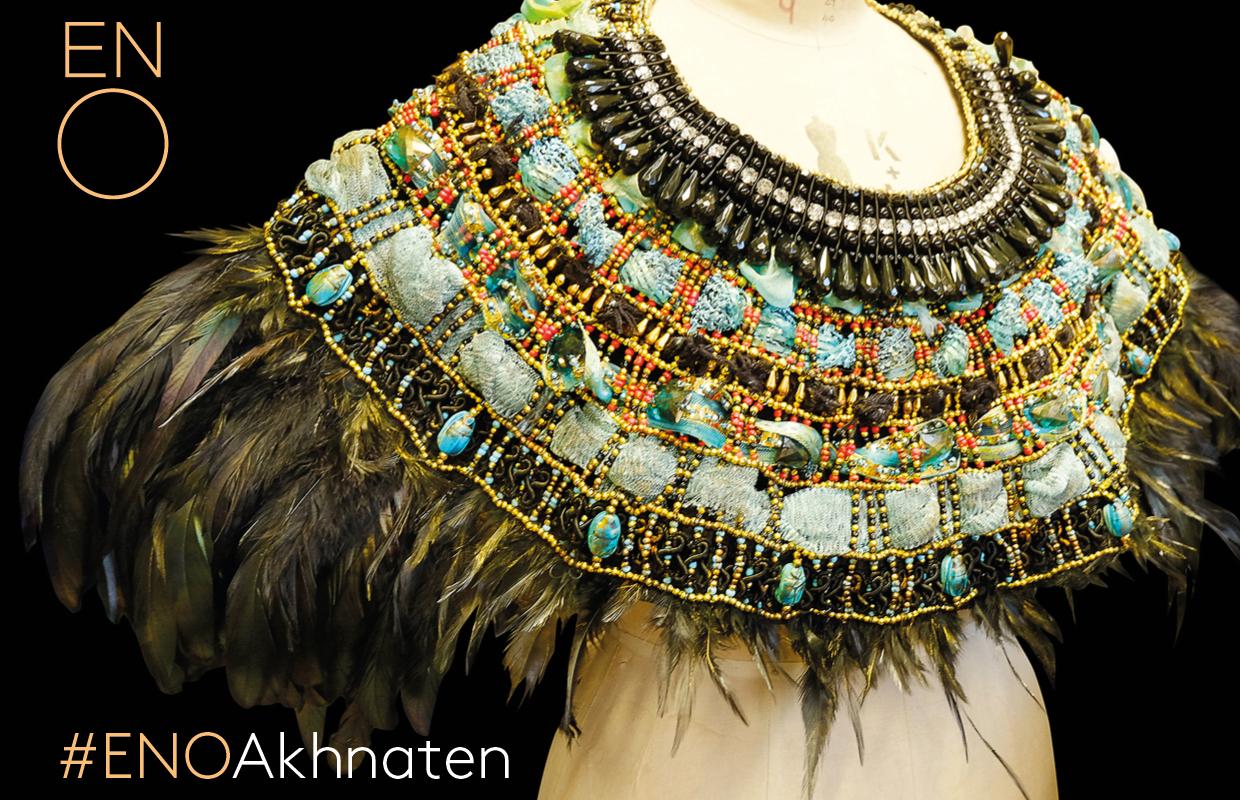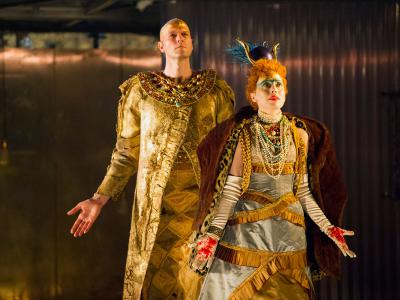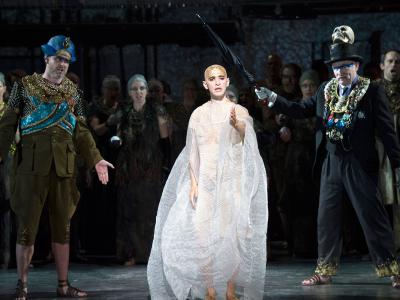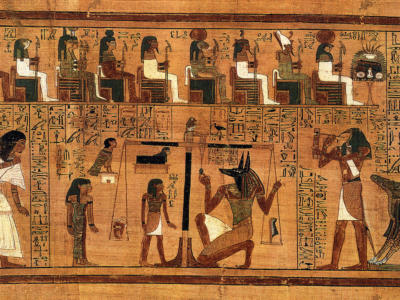ENO Akhnaten: The Design
The opera jumps between times, from the funeral of Amenhotep III to the world of a museum in the 20th century. The production references two periods in its design: the ancient Egyptian world of the 18th dynasty (approx. 1350BC) and the time of rediscovery of this world in the early 20th century. The overarching design concept for the production is the idea of viewing the Egyptian world through the lens of the early 20th century.
The set
The set, designed by Tom Pye, is inspired by the first photographic images from the discovery of the tombs. The set builds on the idea of items from the past being brought back to life, showcasing beams of light breaking into a space that hasn’t seen light for many years. Pye’s colours are muted, as if set items are peeking out beneath layers of dust.
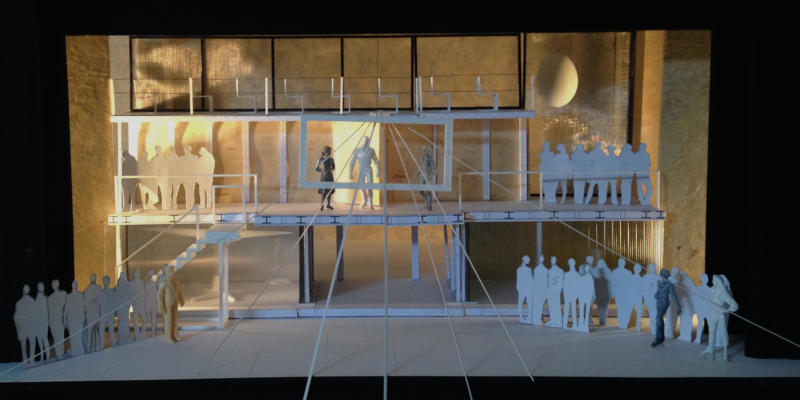
Akhnaten White Card Model Box: The Window of Appearances (Tom Pye)
The set is based on hieroglyphic panels and paintings from the Egyptian Book of the Dead, with a backdrop of papyrus. It is quite formal in its structure with three tiers in a vertical wall, and different activities taking place on each level. In the first layer there are three chambers – one lead, one gold, and one completely open to the back.
Designing for a Philip Glass opera is different to designing for a more classical, narrative-led opera. For Akhnaten the focus is on slowly moving tableaux – images or sequences which take time to unfold. Being less prescriptive than a traditional opera, there is much more freedom with the design and with the stories we tell within each scene or tableaux.
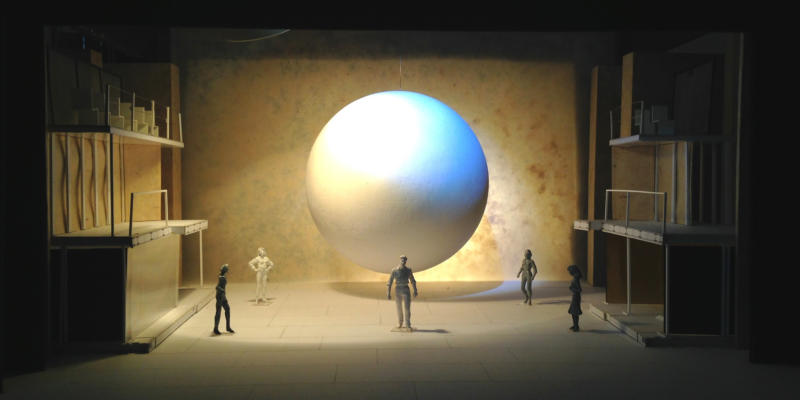
Akhnaten White Card Model Box: The City Dance (Tom Pye)
Costumes, wigs and makeup
The costumes have been designed by Kevin Pollard. They extend the design concept for the production, blending elements from the 1920s with clothing that has seemingly been buried for millennia in the Egyptian tombs. The costume and makeup designs are refined during the rehearsal process, including during the final technical rehearsals when they are first worn on stage and can be seen under the stage lights.
Akhenaten is depicted in many stelae from the period as having an unusual physical appearance, with a swollen stomach and feminine features. His costumes have been designed to present a silhouette of this physicality, with jodhpurs and a low slung waist line. Akhnaten has 7 costumes in this production; one of his costume changes has to take place within 45 seconds (Act 1 Scene 1 into Act 1 Scene 2).
The members of the royal family are dressed in costumes inspired by images from statues and sculptures of the period. A wig of red hair was found in the tomb of Queen Tye so she is depicted in the production with red hair. The chorus wear headdresses of broken stone and skulls, wrapped in layers of hessian, inspired by mummified animals. They depict a dark and mysterious image of the old Egyptian world, avoiding clichéd Egyptian symbolism. Some members of the chorus are dressed in clothing from the 1920s (the time period when Petrie discovered the tomb), referencing animal materials such as feathers that the Egyptians worshipped. Kevin Pollard’s designs are seen in the following pictures of these headdresses in the image gallery below:
Photo Gallery

